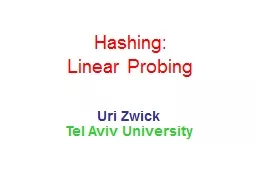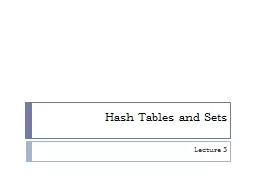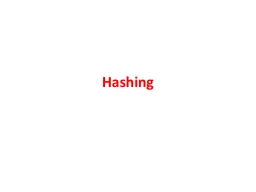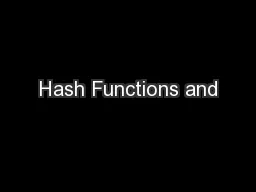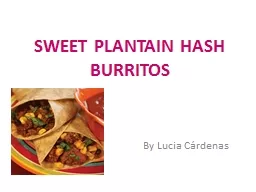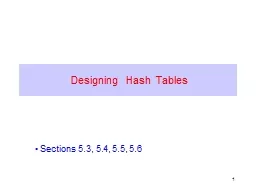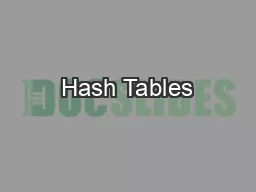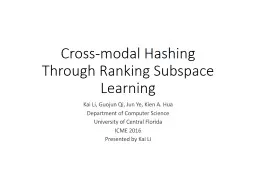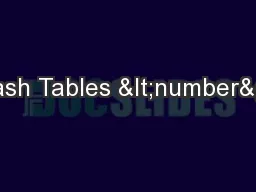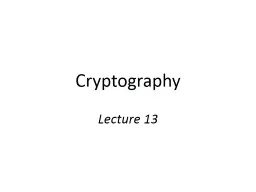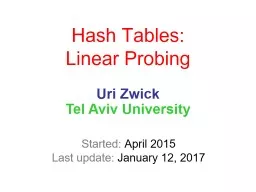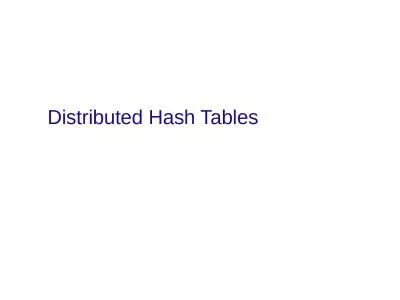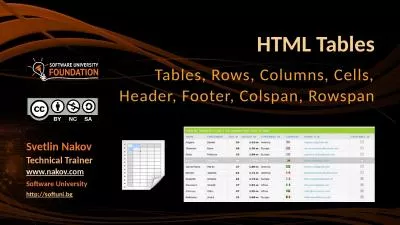PPT-Hash Tables:
Author : natalia-silvester | Published Date : 2016-06-22
Linear Probing Uri Zwick Tel Aviv University Hashing with open addressing Uniform probing Insert key in the first free position among Sometimes assumed to be
Presentation Embed Code
Download Presentation
Download Presentation The PPT/PDF document "Hash Tables:" is the property of its rightful owner. Permission is granted to download and print the materials on this website for personal, non-commercial use only, and to display it on your personal computer provided you do not modify the materials and that you retain all copyright notices contained in the materials. By downloading content from our website, you accept the terms of this agreement.
Hash Tables:: Transcript
Download Rules Of Document
"Hash Tables:"The content belongs to its owner. You may download and print it for personal use, without modification, and keep all copyright notices. By downloading, you agree to these terms.
Related Documents

